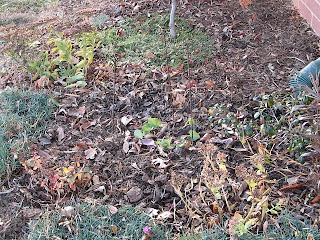 I've found a fun way to use what I grow (and what I buy)--canning!
I've found a fun way to use what I grow (and what I buy)--canning!I started in July after discovering a plethora of canning blogs, starting with Tigress in a Jam. It was too late to join in the can jam, but really inspiring nonetheless. I have a cookbook obsession, so I picked up several books as well, notably Linda Ziedrich's two tomes, The Joy of Pickling and The Joy of Jams, Jellies, and Other Sweet Preserves.
- I started easy, cherries in brandy. I had experience making limoncello, so that was a no brainer--except for picking out a decent brandy.
- Next I tried peach butterscotch, decadence in a jar. Thanks, Well Preserved!
- My first pickle was watermelon rind, an unusual southern thing I had never tried. I love using the whole fruit. I tasted it before canning, and it was pleasant even though I am not a huge clove fan. The verdict will come when I share this at Christmas.
- Next I decided it was time to try a jam, using the Italian prune plums I love and a little cardamom. This did not set very well, so I definitely need practice, but it is great in oatmeal and yogurt.
- Okra was the big success in my garden this summer. I froze much of it, but I had to try pickled okra, a pickle success too.
- Summer was fleeting by this point, so I infused more liquor, this time with lemon verbena from my garden, a recipe from a neat little book called The Herbal Pantry.
- My Grandma made amazing pear preserves, but mine need work. I tried a raw pack, and I guess "they" are right that you should cook the pears. The texture is not super, but the flavor is just as great as when they were ripe. They also look lovely in a brown sugar syrup.
- Pear jam was also not a complete success. I ended up with "pearamel," another decadent sauce.
- Pears also went into vodka, though I think the subtlety of Asian pears is overpowered by the spices I included.
- Quinces became a bit of an obsession in late fall. The preserves are waiting for the perfect recipe, and the jam set beautifully. The quince brandy may be too much of an acquired taste.
- When organic citrus appeared in the stores, I was eager to make marmalade. Put 'Em Up! has a simple recipe. It seems much easier than jam (I guess the pectin in citrus helps). This was super fun and tasty.
- Oranges also went into the vin'orange from Imbibe magazine.
- Finally, I wanted to make something savory and I found this red onion relish at Kitchenette.


















































